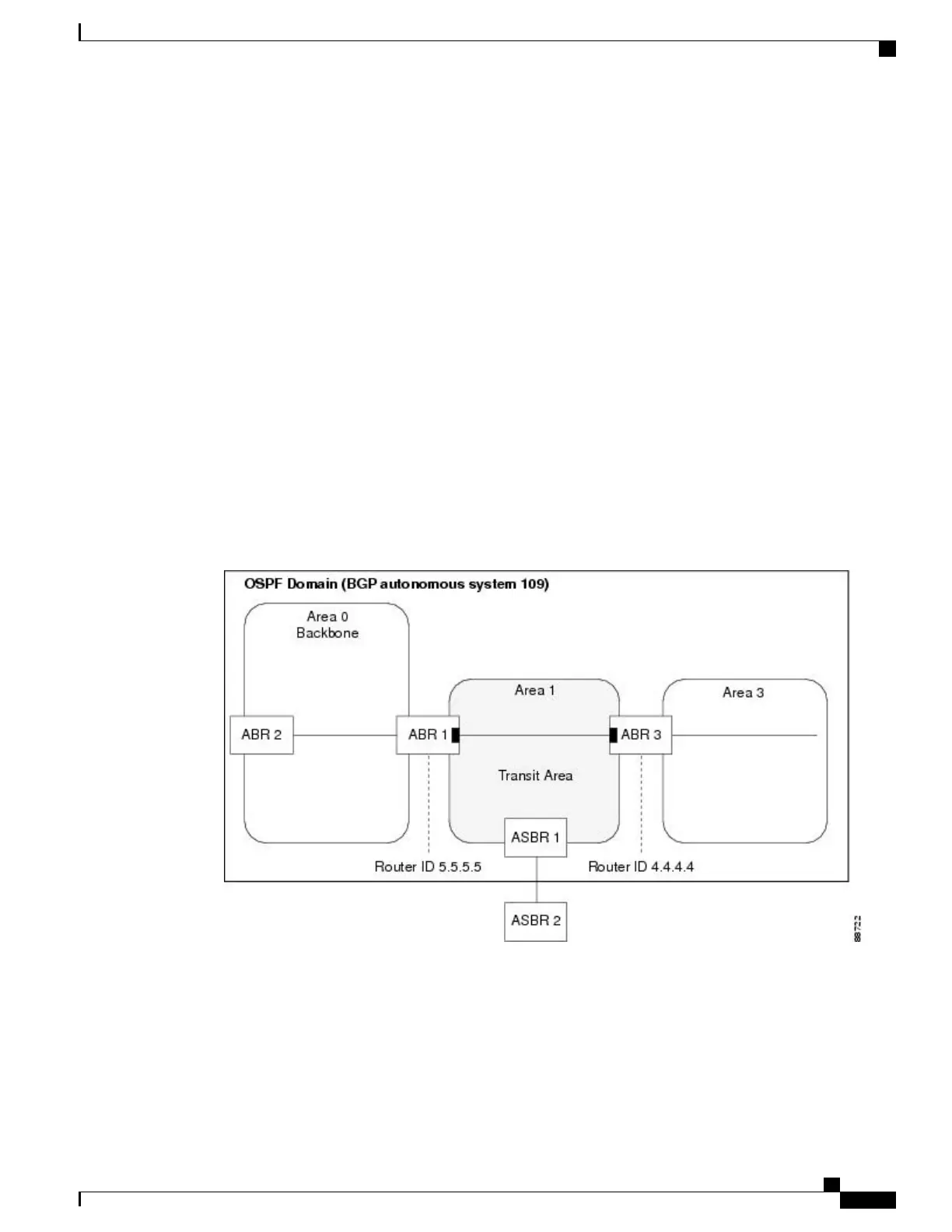In OSPFv3, the sole function of link-state ID in interarea-prefix LSAs, interarea-router LSAs, and autonomous
system external LSAs is to identify individual pieces of the link-state database. All addresses or router IDs
that are expressed by the link-state ID in OSPF Version 2 are carried in the body of the LSA in OSPFv3.
Virtual Link and Transit Area for OSPF
In OSPF, routing information from all areas is first summarized to the backbone area by ABRs. The same
ABRs, in turn, propagate such received information to their attached areas. Such hierarchical distribution of
routing information requires that all areas be connected to the backbone area (Area 0). Occasions might exist
for which an area must be defined, but it cannot be physically connected to Area 0. Examples of such an
occasion might be if your company makes a new acquisition that includes an OSPF area, or if Area 0 itself
is partitioned.
In the case in which an area cannot be connected to Area 0, you must configure a virtual link between that
area and Area 0. The two endpoints of a virtual link are ABRs, and the virtual link must be configured in both
routers. The common nonbackbone area to which the two routers belong is called a transit area. A virtual link
specifies the transit area and the router ID of the other virtual endpoint (the other ABR).
A virtual link cannot be configured through a stub area or NSSA.
This figure illustrates a virtual link from Area 3 to Area 0.
Figure 17: Virtual Link to Area 0
Passive Interface
Setting an interface as passive disables the sending of routing updates for the neighbors, hence adjacencies
will not be formed in OSPF. However, the particular subnet will continue to be advertised to OSPF neighbors.
Use the passive command in appropriate mode to suppress the sending of OSPF protocol operation on an
interface.
Cisco ASR 9000 Series Aggregation Services Router Routing Configuration Guide, Release 5.1.x
OL-30423-03 343
Implementing OSPF
Virtual Link and Transit Area for OSPF

